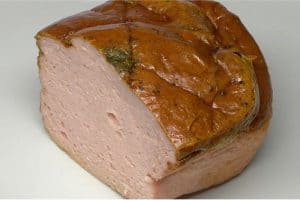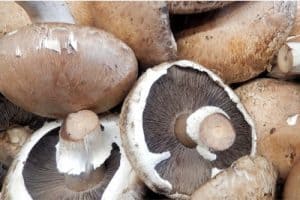Food cravings, or the sudden urge to eat particular food items, is a very common occurrence during pregnancy, and tends to affect about 50-90% of pregnant women, and that’s just in US alone. This could either be the body’s way of telling a pregnant woman that she needs a certain type of nutrient, or it could be attributed to pumped-up hormones coursing through the body. Some of the commonly foods being craved for are sweets, carbohydrates, fruits, vegetables, dairy and the ones that should be paid attention to: foods containing significant amounts of dietary fats.
What are dietary fats?
Dietary fat doesn’t just refer to the plain solid fats that we consume. It also refers to the fats and oils found naturally in animal and plant foods, and those used in cooking, at the table, and added to processed foods. In plants, they are commonly found in seeds, fruits and nuts; while common animal fat sources are meat, fish, eggs, and milk. They can be consumed as naturally as they occur, but also indirectly, for example in pastry and sauces, where they are used to improve flavor and texture.
Fat, just like carbohydrates and protein, is essential to your health, because they are the main sources of energy in the diet, and have a number of other important biologic functions. Aside from being structural components of all our body’s cells, they are also carriers of the fat-soluble vitamins A, D, E, K.
What are the types of dietary fats and their common food sources?
You don’t need to eliminate all fat from your diet. In fact, some fats actually help promote good health. But it’s wise to choose the healthier types of dietary fat and then enjoy them as part of a balanced diet. There are two main types of potentially harmful dietary fats: Saturated Fat and the Trans Fat, which tend to be more solid at room temperature. The healthier fats, on the other hand, the Monounsaturated and Polyunsaturated Fats, tend to be more liquid.
Fats can also have different effects on the cholesterol levels in the body. The bad fats: saturated fats and trans fats raise bad cholesterol levels in your blood. Monounsaturated fats and polyunsaturated fats can lower bad cholesterol levels and are beneficial when consumed as part of a healthy dietary pattern.
The Bad Dietary Fats
Saturated Fat

Saturated fats occur naturally in many foods. The majority come mainly from animal sources, including meat and dairy products. This type increases the bad cholesterol levels in the body, which increases cardiovascular disease risk. Sources of saturated fat include animal-based foods (except fish), full-fat milk and milk products (e.g. cream, cheese and butter), lard, shortening, palm, palm kernel and coconut oils, and some processed foods such as packaged snacks and sweets like bacon, chocolates.
Trans Fats

There are two sources of trans fat in the diet: natural and industry-made. Natural sources of trans fat are found in very small amounts in milk and meat products and are not considered a health concern.
Industry-made trans-fat, however, is formed when an oil is partially hydrogenated. It is found in some processed foods. Eating even small amounts of industry-made trans fat on a regular basis can increase your risk of heart disease and stroke, since this type can increase total blood cholesterol, LDL cholesterol and triglyceride levels, but lower HDL cholesterol. Common foods containing trans-fat are: commercially-baked pastries (cookies, doughnuts, muffins, cakes, pizza dough), packaged snack foods (crackers, microwave popcorn, chips), stick margarine, vegetable shortening, fried foods (french fries, fried chicken, chicken nuggets, breaded fish), and anything containing hydrogenated or partially hydrogenated vegetable oil, even if it claims to be “trans fat-free”.
The Good Dietary Fats
Monounsaturated Fats (MUFA)

Found in a variety of foods and oils, this type of fat is proven to improve blood cholesterol levels, which decreases the risk of heart disease and Type 2 Diabetes Mellitus. Good sources include: olive, canola, peanut, and sesame oils, avocadoes, olives, nuts (almonds, peanuts, macadamia, hazelnuts, pecans, cashews, and peanut butter.
Polyunsaturated Fats (PUFA)

Polyunsaturated fats help reduce bad cholesterol levels in the blood which lowers the risk of heart disease and stroke. They also provide nutrients to help develop and maintain the body’s cells, and contribute vitamin E to the diet, an antioxidant vitamin most Americans need more of.
Oils rich in polyunsaturated fats also provide essential fats that the body needs but can’t produce on its own – such as omega-6 and omega-3 fatty acids which must be obtained through food. Omega-6 and omega-3 fatty acids are important for many functions in the body. Sources of omega-3 polyunsaturated fats include seeds (e.g. flax, chia and hemp), walnuts, canola oil, and oily fishes such as herring, salmon, mackerel and trout. Sources of omega-6 polyunsaturated fats include most plant oils (e.g. soybean, sunflower, safflower), seeds, nuts, grains and non-hydrogenated soft margarines.
Are fats needed in pregnancy?
The “healthy” dietary fats, especially PUFA which contains essential fatty acids, as discussed above, are especially important during pregnancy because they support the baby’s brain and eye development. Fats also help the placenta and other tissues to grow, and can even help prevent preterm birth and low birth weight. Fats, in general, is also an important source of maternal energy, giving off 9 calories per gram, which is twice as much as those from protein and carbohydrates.
Recommendations for fat intake during pregnancy
During pregnancy, the additional demand for uterine, placental, and fetal growth, together with the increased maternal blood volume and mammary gland development, raises the fat requirement between 20 and 35% of total calories. Note that each gram of fat provides 9 kilocalories, twice as much as that from protein and carbohydrates. Most of the fat sources should come from the healthy sources of MUFA and PUFA.
The 2015-2020 Dietary Guidelines for Americans offers recommendations about fat intake such as: avoid trans-fat, limit saturated fat, and replace saturated fat with MUFA and PUFA sources.
Which fats to include in meals
To get the nutrients you need, eat a dietary pattern that emphasizes fruits, vegetables, whole grains, low-fat dairy products, poultry, fish and nuts, while limiting red meat and sugary foods and beverages. Choose lean meats and poultry without skin and prepare them without added saturated and trans-fat.
Replace foods high in saturated fats with foods high in monounsaturated and/or polyunsaturated fats. This means eating foods made with liquid vegetable oil but not tropical oils. It also means eating fish and nuts.
Which fats or oils to avoid consuming during pregnancy
The primary dietary source for trans fats in processed food is “partially hydrogenated oils.” Look for them on the ingredient list on food packages. Look for processed foods made with unhydrogenated oil rather than partially hydrogenated or hydrogenated vegetable oils or saturated fat. Use soft margarine as a substitute for butter, and choose soft margarines (liquid or tub varieties) over harder stick forms. Look for “0 g trans fat” on the Nutrition Facts label and no hydrogenated oils in the ingredients list. Doughnuts, cookies, crackers, muffins, pies and cakes are examples of foods that may contain trans fat and should be limited in intake.
References:
- Williams Obstetrics (24th edition.). New York: McGraw-Hill Education.
- Le, H.E, Biggers, A., Carter, A. et.al. (2018) When do pregnancy cravings start? Retrieved August 28, 2020 from https://www.healthline.com
- Hutton, L., The 10 most common pregnancy cravings and why we have them. Retrieved August 28, 2020 from https://www.familyeducation.com
- HealthLinkLBC. (2018) Dietary fats and your health. Retrieved August 28, 2020 from https://www.healthlinkbc.ca/.
- Department of Health and Human Services and US Department of Agriculture. 2015-2020 Dietary Guidelines for Americans. 8th ed. health.gov. Updated December 2015. Accessed August 28, 2018.
- Martin, L.J. (2018) Dietary Fats explained. Retrieved August 28, 2020 from https://medlineplus.gov/












